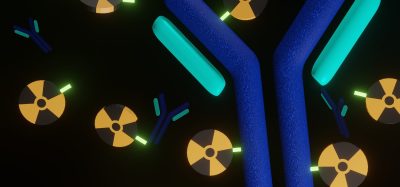How smoking and alcohol shape mutations in our DNA
Posted: 10 October 2025 | Drug Target Review | No comments yet
Researchers have refined a cutting-edge DNA sequencing tool that reveals how mutations accumulate in healthy tissues as we age, offering insights into the earliest stages of cancer development.


Researchers have refined a powerful DNA sequencing tool that can locate hidden mutations that occur naturally in our bodies as we age. In the largest study to date, they have used the tool to provide insights into the earliest steps of cancer development and the role of mutations in healthy tissue.
The new study, published in Nature, was led by researchers from the Wellcome Sanger Institute, in collaboration with the TwinsUK study at King’s College London. The team introduced an improved version of nanorate sequencing (NanoSeq) – an ultra-accurate DNA sequencing method that reveals changes in healthy tissues, that were previously unnoticeable.
Mapping mutations across more than a thousand volunteers
By applying targeted NanoSeq to cheek swabs and blood samples from more than 1,000 volunteers, the researchers discovered a rich landscape of mutations in healthy tissues, offering the most detailed picture so far of how tissues mutate over time.
Biomarkers are redefining how precision therapies are discovered, validated and delivered.
This exclusive expert-led report reveals how leading teams are using biomarker science to drive faster insights, cleaner data and more targeted treatments – from discovery to diagnostics.
Inside the report:
- How leading organisations are reshaping strategy with biomarker-led approaches
- Better tools for real-time decision-making – turning complex data into faster insights
- Global standardisation and assay sensitivity – what it takes to scale across networks
Discover how biomarker science is addressing the biggest hurdles in drug discovery, translational research and precision medicine – access your free copy today
We’ve used NanoSeq to begin to understand the earliest steps in cancer development and uncover the role of somatic mutations in ageing and different diseases
“We’re proud to present targeted NanoSeq, a new method that has completely transformed our ability to study somatic mutations in normal and diseased tissues,” said Dr Andrew Lawson, co-first author at the Wellcome Sanger Institute. “We’ve used NanoSeq to begin to understand the earliest steps in cancer development and uncover the role of somatic mutations in ageing and different diseases.”
As people age, their cells naturally acquire DNA mutations, known as somatic mutations. Most are harmless, but some can provide a growth advantage, leading to ‘clones’ of cells that carry the same mutations. As they multiply, some groups of clones have the potential to become the earliest stage in cancer development, but they may also contribute to ageing and other diseases.
Refining NanoSeq for precision
Detecting mutations in tumours is relatively straightforward, but finding rarer mutations in normal tissues has been extremely challenging. Most sequencing methods cannot reliably separate real mutations from sequencing errors in biopsies composed of thousands of clones.
To overcome this, researchers from the Sanger Institute and their collaborators refined NanoSeq so that it can precisely measure mutation rates, identify mutation patterns and detect key driver mutations in any tissue.
“Although managing such a large cohort was a huge endeavour, now that we have tools like NanoSeq to detect all types of somatic mutations, soon this study will be seen as a pilot of even larger scale epidemiological studies,” said Dr Pantelis Nicola, co-first author at the Wellcome Sanger Institute.
For the first time, the researchers used targeted NanoSeq to analyse non-invasive human samples – cheek swabs – from 1,042 participants in the TwinsUK cohort, together with 371 blood samples. The volunteers ranged in age from 21 to 91 and included smokers and non-smokers, people with different histories of alcohol consumption and varied lifestyles and exposures to cancer.
Lifestyle links and mutational signatures
The researchers discovered over 340,000 mutations in cheek cells, including over 62,000 in genes known to drive cancer. They identified 49 genes under positive selection – those with mutations that give cells a growth advantage – including many well-known cancer genes such as TP53.
The study also revealed clear mutational signatures – patterns of mutations in the genome – linked to ageing, tobacco smoking and alcohol consumption
The study also revealed clear mutational signatures – patterns of mutations in the genome – linked to ageing, tobacco smoking and alcohol consumption. For example, smoking was linked to more mutations in the NOTCH1 gene and larger growth of mutant clones, while heavy drinking left a distinctive pattern of DNA changes.
“This is the largest study to date on how somatic mutations accumulate in a human tissue, as a result of ageing, smoking, alcohol, biological sex and other risk factors. Mutational landscapes could one day be used as measurable indicators of cancer risk, allowing earlier and more precise interventions,” Dr Federico Abascal, co-first author at the Wellcome Sanger Institute.
Importantly, most mutated clones in normal tissue were found to be very small and did not continuously grow over time. This suggests that while mutations are common, most mutated cells are prevented from expanding and progressing to cancer.
Towards new tools for cancer prevention
By combining large-scale sampling with an improved, highly accurate sequencing tool, this research provides the most detailed picture yet of how normal tissues mutate and evolve over time. The findings open the door to using NanoSeq to directly measure how lifestyle, environmental and inherited factors influence DNA.
“With NanoSeq, we are able to measure the genetic consequences of certain lifestyle factors in normal tissues, meaning we can better understand why and how they cause cancer,” said Dr Iñigo Martincorena, senior author at the Wellcome Sanger Institute.
“We hope that this new ability to study somatic mutations in non-invasive tissue biopsies from healthy individuals becomes a useful tool for cancer prevention, by improving our ability to identify exposures in the population that could be mutagenic and carcinogenic, and by helping in the discovery of cancer preventive drugs.”
Related topics
Cancer research, Drug Discovery Processes, Genetic Analysis, Molecular Biology, Next-Generation Sequencing (NGS), Sequencing, Translational Science
Related conditions
Cancer
Related organisations
King's College London, the Wellcome Sanger Institute, TwinsUK








